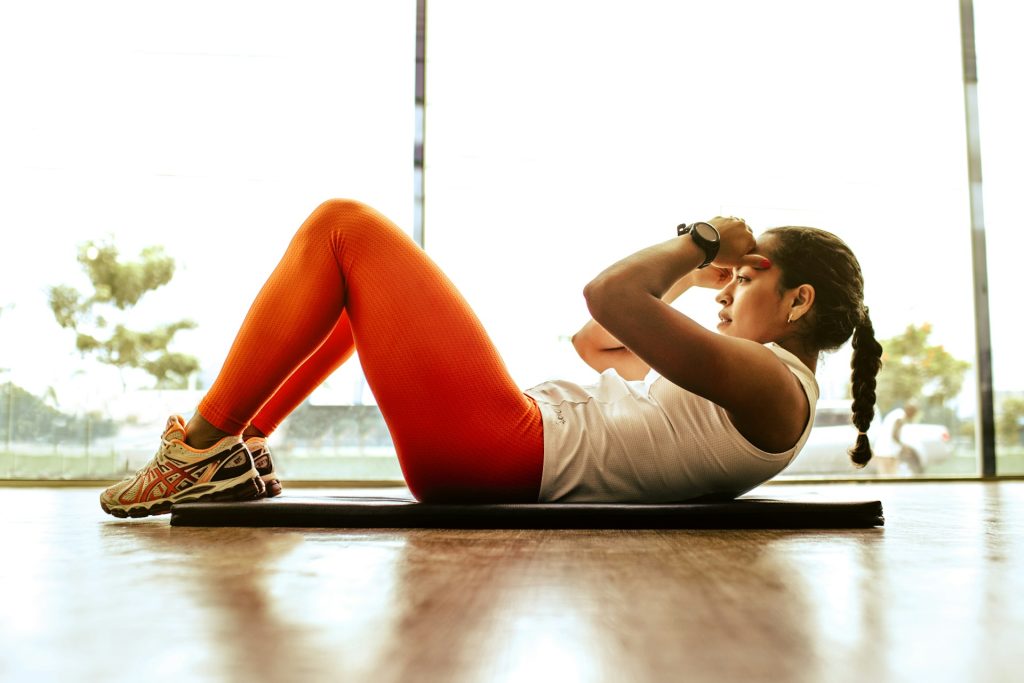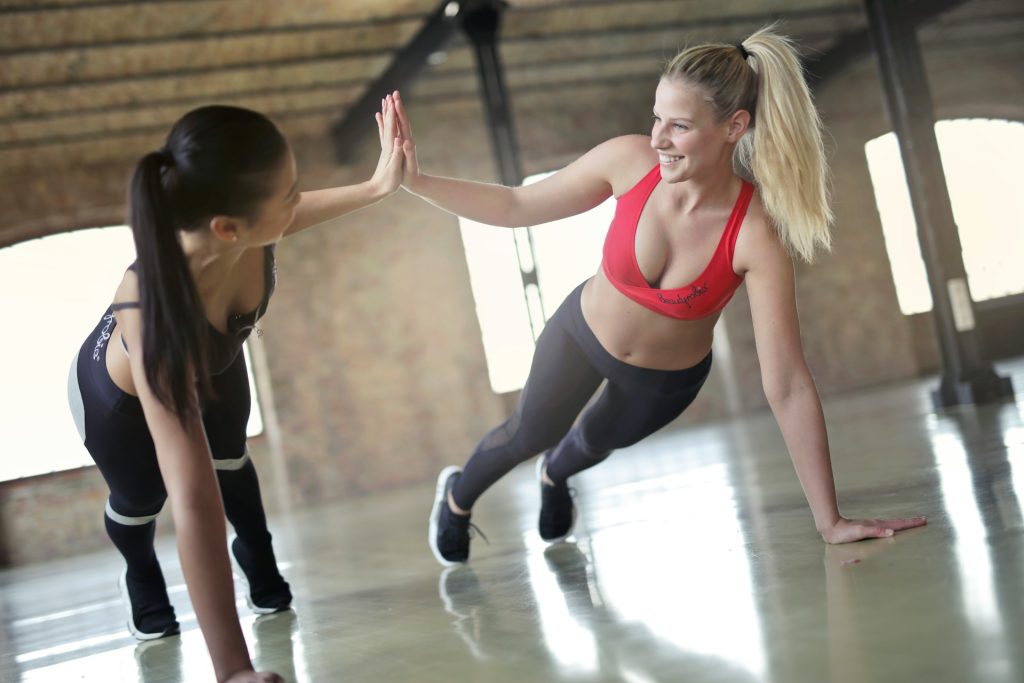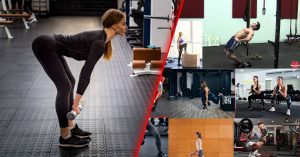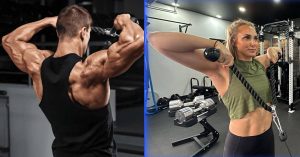In a world where fitness trends come and go, the core and cardio workout stand out as a timeless revolution in personal fitness. With just a simple mat and the endless possibilities of the outdoors, these workouts are here to breathe new life into your fitness regime.
But what exactly sets a core and cardio workout apart from the rest? Why are they considered revolutionary? Dive in with us as we explore the essence and transformative power of these workouts.
Table of contents
MORE keyboard_double_arrow_down LESS keyboard_double_arrow_up
The Magic of Core and Cardio Workout
The real magic of core and cardio workout lies in their simplicity and effectiveness. By combining aerobic exercises that increase your heart rate with core-strengthening movements, these workouts deliver a double punch of benefits. But it’s not just about the physical benefits.
These exercise are all about having fun and feeling motivated. Workouts are designed to be enjoyable and engaging, so you’ll actually look forward to getting active. This makes it much easier to stick with a routine in the long run.
Furthermore, spending time outdoors and exercising with others can do wonders for your mental health. Being in nature has a well-known calming effect, and the social interaction of group workouts can boost your mood and overall well-being. It’s a win-win for your body and mind.
But just as you’re beginning to grasp the transformative potential of core and cardio workouts, there’s a twist. How do these workouts adapt to different environments, and what does a typical session look like? Stay tuned as we delve deeper into the heart-pumping world of core and cardio workouts, revealing exercises, tips, and tricks to maximize your fitness journey.
The Ultimate Core and Cardio Workout Plan
Dive into a workout plan that’s simple yet powerful. All you need is your body, a yoga mat, and a pinch of determination. Ready to challenge yourself?
What You’ll Need:
- Just you and a comfy yoga mat.
The Exercises:
Let’s break it down into three exciting circuits:
Circuit 1: Build and Balance
- Reverse lunge to knee drive (right)
- Reverse lunge to knee drive (left)
- Squat
- Walkout to shoulder tap
Circuit 2: Jump and Pump
- Jumping jack
- Squat jump
- Squat hold
- High knees
- Burpee
Circuit 3: Core Galore
- Forearm plank
- Single-leg jackknife (right)
- Single-leg jackknife (left)
- Bicycle crunch
- Mountain climber
Directions:
For a seamless flow, follow these steps:
- Circuit 1: Do each move for 30 seconds with no breaks. If your form slips, pause, reset, and go again. Rest for 30 to 60 seconds after completing all moves. Repeat for 2 rounds.
- Circuit 2: Same as Circuit 1, but aim for 3 rounds this time. The pace picks up here.
- Circuit 3: You guessed it, 30 seconds per exercise, straight into the next. After the final move, rest, then do it all over one more time for a total of 2 rounds.
And there you have it a core and cardio workout that tests your limits and builds your strength.
Dive Into Core and Cardio Workouts

Reverse Lunge to Knee Drive
How to:
- Stand tall with your feet hip-width apart and stomach tight.
- Take a big step back with your right leg. Bend both knees until they form right angles (like a box).
- Push off the ground with your front heel to stand up straight. Bring your right knee up high towards your hip, hold for a second while balancing on your left leg.
- Then, step your right leg back again and lower yourself into another lunge on the same side.
- Keep going for 30 seconds on that leg before switching to the other side!
Why it’s great: It challenges your balance and strengthens your legs and glutes, key for your everyday movements.
Squat
How to:
- Stand up straight with your feet shoulder-width apart and stomach pulled in tight.
- Stick your arms out in front of you and hold your hands together.
- Imagine you’re sitting in a chair. Push your hips back and bend your knees like you’re actually going to sit. Keep bending until your knees are at least at right angles (like a box) and your thighs are almost parallel to the ground.
- To stand back up, squeeze your glutes and straighten your legs to return to starting position!
Why it’s great: Squats build strength in your legs and butt, serving as a powerful base for various exercises.
Walkout to Shoulder Tap
How to:
- Stand tall with your feet shoulder-width apart and stomach tight.
- Bend at your hips and reach your hands down to the floor in front of you.
- Keep your stomach pulled in tight and your legs straight. Walk your hands one by one out in front of you, like a crab walk, until your body is in a straight line, like a push-up position on your hands (high plank).
- Now, lift your right hand and touch your left shoulder, then switch and lift your left hand to tap your right shoulder. Try to keep your stomach tight and your hips still the whole time.
- Walk your hands back to where your feet started, then stand up straight to finish!
Why it greatt: This move boosts core strength and flexibility, especially in your hamstrings, while keeping your hips steady.
Jumping Jack
How to:
- Stand tall with your feet together and stomach tight. Keep your hands by your sides.
- In one jump, spread your legs wider than your hips and clap your hands over your head.
- Jump again to bring your feet back together and your arms back down to your sides. That’s one jump jack!
- Do as many jumps as you can, jump really high and fast.
Why it’s great: Jumping jacks increase your heart rate, improving cardio health. For a gentler option, step instead of jump.
Squat Jump
How to:
- Stand tall with your feet shoulder-width apart and toes pointing a little outwards. Hold your hands together in front of you.
- Bend your knees like you’re gonna sit in a chair, push your hips back, and squat down. Keep your chest up, stomach tight, and back straight.
- Then jump up! Swing your arms down to help you jump higher. Land back where you started with your feet shoulder-width apart and toes pointed out a little. Squat down right away to start the next jump.
- Keep going.
Why it’s great: Not only does it strengthen your lower body, but it also adds a cardio punch to your workout, burning calories and building endurance.
Squat Hold
How to:
- Stand up straight with your feet shoulder-width apart and stomach pulled in tight. Hold your hands together in front of you.
- Imagine you’re sitting in a chair. Push your hips back and bend your knees like you’re actually going to sit. Keep bending until your knees are at least at right angles (like a box) and your thighs are almost touching the ground.
- Hold for a beat like you’re taking a photo in this deep squat.
This squat hold is like a deep squat freeze! Your legs will feel like they’re working hard to hold you up, even though you’re not moving.
High Knees
How to:
- Stand tall with your feet hip-width apart. Keep your chest up and stomach tight.
- Pretend you’re running in place, but instead of kicking your feet out, bring your knees up high towards your chest, one leg at a time. Keep your hands in front of you for balance.
- Each time you bring a knee up to your chest, that counts as one! Keep switching legs and running in place with high knees as fast as you can for your workout time.
Running high knees is a jumping exercise that strengthens your legs and belly. Want to do it with less jumping? Just bring your knees up high one at a time, but keep your other foot on the ground!
Burpee
How to:
- Stand tall with your feet hip-width apart and squeeze your stomach and glutes tight. Put your hands on the floor and jump your legs back, like a crab walk, until your body is in a straight line (high plank).
- Lower your chest all the way down to the ground, like a push-up. Push back up to straight arms (high plank again).
- Jump your feet back to your hands and then jump up as high as you can with your arms reaching overhead! Land softly on your toes and do it all again.
If this exercise feels too hard, you can leave out the chest dip (push-up) or the high jump at the very end.
Forearm Plank
How to:
- Get on all fours and bend your elbows down to the ground, shoulder-width apart, and clasp your hands together in front of you (fingers pointing forward).
- Push your knees straight back, one by one, until you’re standing tall on your toes in a straight line, like a superhero landing!
- Squeeze your belly button, butt, and thighs tight. Imagine you’re a long, strong board from the top of your head all the way down to your toes.
- Look down at the ground a little bit so your neck feels comfy.
- Hold this super strong pose
Why it’s great: This exercise activates your entire core, including abs, lower back, and hips, enhancing stability and endurance.
Single-Leg Jackknife
How to:
- Lie flat on your back with your legs straight up in the air and your arms reaching over your head.
- Tighten your stomach muscles and lift just one leg straight up off the ground. At the same time, lift your opposite hand (so if your right leg is up, lift your left arm) and reach it towards your leg. Try to touch your hand to your ankle or as high as you can comfortably reach.
- Slowly lower your leg and arm back down to the ground, keeping your stomach tight the whole time. Then, switch sides and repeat!
Why it’s great: Focuses on your obliques and overall core strength, adding a dynamic challenge to your routine.
Bicycle Crunch: A Twist on Core Engagement
How to:
- Lie on your back with your knees bent and pointing straight up to the ceiling, like you’re sitting in a comfy chair. Put your hands behind your head with your elbows out to the sides.
- Now, imagine you’re pedaling a bicycle. Twist your upper body to bring one elbow towards the opposite knee, and straighten the other leg out long at the same time. Then, switch sides and twist to bring your other elbow to the other knee, while straightening the first leg back up.
- That’s one rep! Keep twisting back and forth, like pedaling a bike fast, but nice and slow so you can feel your stomach muscles working. Keep going for your workout time!
Why it’s great: This exercise not only targets the abs but also the rotational muscles, enhancing flexibility and core power.
Mountain Climber
How to:
- Get into a strong push-up position on your hands and toes. Hands should be shoulder-width apart, and your body should form a straight line from head to heels. Squeeze your stomach tight!
- Now, bring one knee up high towards your chest, like you’re running in place but holding a push-up. Quickly put that leg back down and then bring your other knee up high to your chest.
- Keep your stomach tight the whole time and keep alternating legs quickly, like running in place with high knees, but without letting your hips sag! That’s one rep.
- Do as many as you can for your workout time!
Why it’s great: While primarily focusing on the core, it introduces a cardio element, increasing heart rate and burning calories.
Practical Advice To Keep in Mind When Doing Core and Cardio Workout

- Focus on form over speed: It’s better to do exercises correctly at a slower pace than to rush through them with bad form. This will help you avoid injury and get the most out of each exercise.
- Engage your core throughout your workout: Your core is responsible for stabilizing your spine and pelvis. Keep your core muscles engaged during both core-specific exercises and cardio exercises.
- Listen to your body: Don’t push yourself too hard, especially when you’re starting. Take breaks when you need them and gradually increase the intensity of your workouts as you get fitter.
- Mix it up: Don’t do the same workout every day. This will help to prevent boredom and keep your body challenged. There are many different cardio and core workout gym exercises you can do, so find ones that you enjoy and that fit your fitness level.
Conclusion
As our exploration draws to a close, the journey of core and cardio workout emerges as a beacon of refreshment and effectiveness in the fitness landscape. Whether you choose the tranquility of a park or the comfort of your living room as your arena, these workouts stand ready to challenge and rejuvenate your spirit.
So, don’t settle for just another fitness fad. Core and cardio workout offers a timeless path to a stronger, healthier you. They’re simple to do, adaptable to any environment, and guaranteed to leave you feeling energized. Unleash your fitness potential – start your core and cardio revolution today!
Key Points
- Core and cardio workouts combine exercises to strengthen the core muscles while also boosting cardiovascular health, utilizing minimal equipment and primarily relying on bodyweight movements.
- They are essential for building a strong foundation, enhancing posture, balance, and overall fitness, and are effective for calorie burning and heart health improvement.
- Designed to be performed anywhere, making them accessible and convenient for those looking to workout at home with limited space or equipment.
- Incorporating these workouts 3-4 times per week allows for a balanced fitness routine, providing ample rest and recovery between sessions.
- A yoga mat for comfort and proper workout shoes for support are generally sufficient, emphasizing the accessibility of these workouts.
- Tailoring exercises to individual needs or limitations is encouraged, ensuring everyone can participate safely and effectively, regardless of fitness level or physical restrictions.
- Can vary from 20 to 60 minutes based on individual fitness levels and workout intensity, with flexibility to adjust as needed.
- Weight Loss and Muscle Building: The cardio and core workout exercises support weight loss by burning calories and building muscle, which can enhance metabolism.
- Suitable for individuals at all fitness levels, with options to modify exercises to increase or decrease intensity.
- Maintaining a workout journal and noting performance improvements, workout consistency, and body composition changes over time can help gauge progress.
FAQs
1. What are core and cardio workouts?
Core and cardio workouts are exercises that focus on strengthening the core muscles (including the abs, obliques, and lower back) while also increasing heart rate to improve cardiovascular health. They combine strength training with aerobic exercises for a comprehensive fitness routine.
2. Why are core and cardio workouts important?
These workouts are crucial because they help build a strong foundation for your body, improving posture, balance, and overall fitness. Additionally, the cardiovascular component helps burn calories, reduce body fat, and increase heart health.
3. Can I do core and cardio workouts at home?
Yes, core and cardio workouts are perfectly suited for home environments. Most exercises require minimal equipment, such as a yoga mat, and utilize bodyweight movements, making them accessible to anyone.
4. How often should I do core and cardio workouts?
Frequency can vary based on individual fitness levels and goals. However, a good starting point is to incorporate these workouts into your routine 3-4 times per week, allowing for rest or lower intensity days in between.
5. Do I need any special equipment for these workouts?
No, one of the benefits of core and cardio workouts is that they require minimal equipment. A yoga mat for comfort and good workout shoes for support are generally all you need.
6. What if I can’t perform a particular exercise due to injury or difficulty?
Always listen to your body and modify exercises as needed. For example, if a standard burpee is too challenging or risky due to an injury, you can omit the jump or push-up component. Consult with a fitness professional to find suitable alternatives that meet your needs.
7. How long should a core and cardio workout last?
A typical core and cardio workout can last anywhere from 20 to 60 minutes, depending on your fitness level and the intensity of the workout. The key is to maintain a pace that keeps your heart rate up while effectively engaging your core.
8. Can core and cardio workouts help with weight loss?
Yes, these workouts can be an effective part of a weight loss strategy. They combine strength training, which builds muscle and increases metabolism, with cardiovascular exercise, which burns calories and fat.
9. Are these workouts suitable for beginners?
Absolutely. Core and cardio workouts can be adapted to any fitness level. Beginners should start with basic movements and gradually increase intensity as their strength and endurance improve.
10. How can I track my progress with core and cardio workouts?
Keep a workout journal to note the exercises you do, the number of sets and repetitions, and how you felt during each workout. Also, take note of improvements in your ability to perform each exercise, increases in workout duration, and changes in your body composition over time.

ABOUT THE AUTHOR
Follow Valen Steven for a dose of fitness enthusiasm, evidence-based advice, and a roadmap to achieving your health and wellness goals.
Subscribe to our Newsletter
Dive into a world of fitness and wellness with our exclusive newsletter! Sign up now and receive weekly power-packs of fitness wisdom




